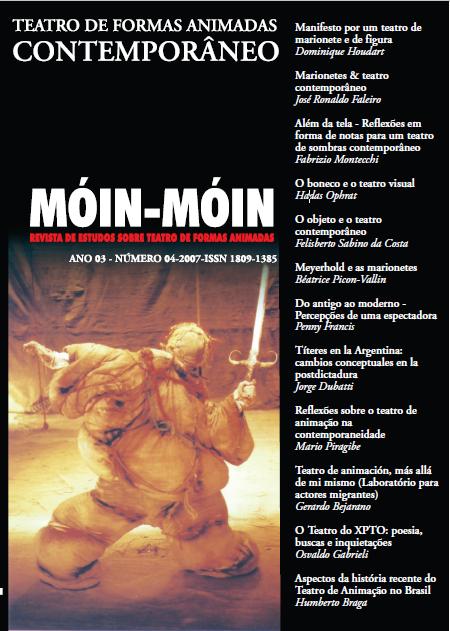Manifeste pour un théâtre de marionette et de figure
DOI :
https://doi.org/10.5965/2595034702042007033Résumé
Avec le gigantesque bouleversement du monde de l´image et de la
communication, le speactacle vit une révolution sourde et douce mais réelle, dont les professionnels et les médias n´ont pas tout à fait encore mesuré l´importance. Le théâtre occidental, qui était entré en décadence depuis le déclin de la tragédie classique à la fin du XVIIème siècle et l´abandon du masque par les comédiens italiens, connaît um renouveau prometteur dû en partie au déferlement audiovisuel qui est la marque de notre époque, car, par contre coup, il retrouve la porte étroite de la théâtralité, le sens du sacré et du rituel.
Les arts du spectacle, le théâtre, la marionnette, la danse, la musique, du
moins chez les artistes les plus authentiques, convergent dans un mouvement diffus et informel dont la constante est l´utilisation des marionnettes, des figures, du mot latin figura qui signifie représentation. Pléonasme? Certes non, mais précision bien utile et qui signifie que le théâtre retrouve le sens du signe qu´il n´aurait jamais dû perdre, qu´au théâtre tout est signe, le mot et le corps, l´espace et l´objet, le mouvement et la lumière, et le théâtre qui ignore ce langage symbolique n´est qu´une dérive douteuse.
Téléchargements
Téléchargements
Publiée
Comment citer
Numéro
Rubrique
Licence
Ao submeter um artigo à Móin-Móin Revista de Estudos Sobre Teatro de Formas Animadas e tê-lo aprovado os autores concordam em ceder, sem remuneração, os seguintes direitos à Revista: os direitos de primeira publicação e a permissão para que a Revista redistribua esse artigo e seus metadados aos serviços de indexação e referência que seus editores julguem apropriados.
Os artigos cujos autores são identificados representam a expressão do ponto de vista de seus autores e não a posição oficial da revista Móin-Móin.
Plágio, em todas as suas formas, constitui um comportamento antiético de publicação e é inaceitável. A Revista Móin-Móin reserva-se o direito de usar software ou outros métodos de detecção de plágio para analisar os trabalhos submetidos.
![]()
Este obra está licenciado com uma Licença Atribuição-NãoComercial 4.0 Internacional






